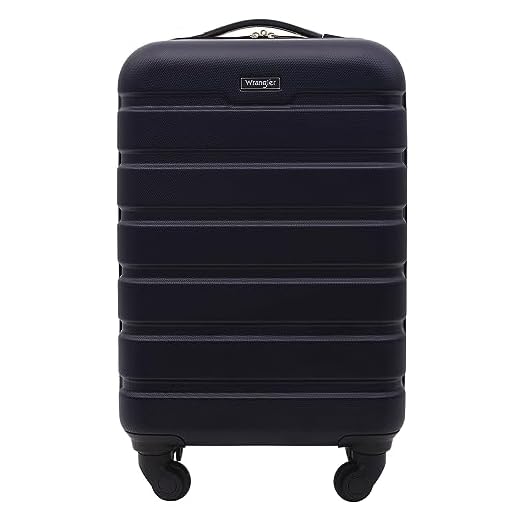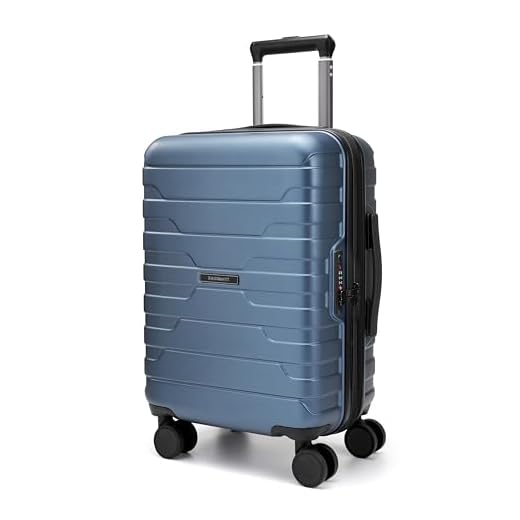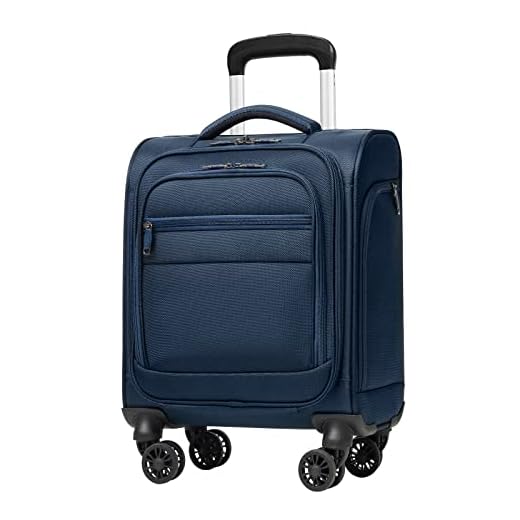







Yes, when assessing the dimensions and specifications for personal items onboard aircraft, the presence of roller features is typically accounted for in the overall measurements. Airlines establish precise guidelines, and these parameters often encompass all protrusions, including handles and wheels.
Most major airlines stipulate that dimensions include the entire external structure of your item. Therefore, if a bag features rollers, it’s crucial to measure it from the base to the top of the handle, ensuring compliance with the maximum size allowed. Generally, the standard limit for a personal item ranges between 15 to 18 inches in height, including any fastening mechanisms.
Before packing, verify specific airline policies regarding size measurements. While some carriers might offer flexibility, others could strictly adhere to guidelines, potentially impacting your travel experience. When in doubt, measure meticulously and opt for items that consolidate features for ease of transport.
Do Carry-On Luggage Restrictions Include Wheels
The dimensions of your travel bag usually cover the entire item, including any attached components such as wheels. Airlines often set maximum size limits for cabin bags, and this typically encompasses both the main body and additional features like handles and wheels.
To ensure compliance, measure your carry bag from its longest points, incorporating the wheels, as they contribute to the overall size. Common size allowances for overhead compartments range from 22 x 14 x 9 inches (56 x 36 x 23 cm) to 21 x 13 x 9 inches (53 x 33 x 23 cm), depending on the airline.
For specific requirements, it’s advisable to review each airline’s website before travel to avoid issues at the boarding gate. Consider purchasing a bag designed to fit within these regulations, as they often optimize space while accommodating wheels and other features without exceeding limits.
Some travel items with removable wheels may allow more flexibility; however, this can vary by airline. If you’re uncertain, reaching out to your carrier can provide clarity on their particular stance about accessories.
Understanding Airline Carry-On Size Limits
Airlines typically enforce size limits that encompass the entire bag, dimensions, and any external components such as handles and casters. Basic guidelines generally permit travelers to bring a single piece of handheld baggage that fits within specified measurements, usually ranging from 22 x 14 x 9 inches (56 x 36 x 23 cm) to 24 x 16 x 10 inches (61 x 41 x 25 cm).
It’s advisable to review the specifications of your chosen airline, as these may differ significantly. Here are some key points to keep in mind:
- Measure your bag with handles and casters to ensure compliance.
- If using a bag with wheels, include their dimensions while determining size.
- Some carriers offer size-check boxes at the airport for on-the-spot verification.
- Consider packing compactly to maximize internal space while adhering to external size guidelines.
Additional tips:
- Utilize soft-sided options that can adjust slightly to fit into tighter spaces.
- Pay attention to weight limitations, as many airlines enforce both size and weight restrictions.
- Keep essentials easily accessible, as you’ll likely need to remove the bag from overhead compartments during boarding and deplaning.
By being mindful of these parameters, you can avoid unnecessary fees or inconvenience at check-in and throughout your travels.
Specific Regulations on Luggage Dimensions
Most airlines enforce specific size allowances for personal items and larger bags brought into the cabin. Generally, the combined total of height, width, and depth for these items should not exceed the dimensions provided by each carrier.
| Airline | Maximum Dimensions (in inches) |
|---|---|
| American Airlines | 22 x 14 x 9 |
| Delta Airlines | 22 x 14 x 9 |
| United Airlines | 22 x 14 x 9 |
| Southwest Airlines | 24 x 16 x 10 |
| JetBlue | 22 x 14 x 9 |
It’s crucial to measure any item correctly, including all external components like handles and adding protruding elements, as they will count towards total dimensions. Many passengers erroneously assume that measurements only refer to the main compartment.
Some airlines may differ slightly in their policies when it comes to softer materials. Bags that can be compressed may sometimes allow flexibility in exceeding the stated limits without incurring fees. It’s advisable to consult with the specific airline before departure.
Additional rules may apply for items such as laptops, musical instruments, and medical equipment, and these often have dedicated allowances. Always confirm the latest guidelines directly from the airline to avoid unexpected surprises at check-in.
Influence of Wheels on Total Carry-On Measurements
Wheels can significantly impact the overall dimensions of a travel accessory. When assessing size limits imposed by airlines, it’s crucial to account for any protruding elements such as wheels. Typically, the total measurement includes all parts of the bag, meaning that the length and height with wheels may determine compliance.
Most airlines outline specific dimension requirements, often measuring a rectangular box format. Therefore, incorporating wheels can elevate the total size beyond permissible limits. When choosing a travel bag, consider those designed to maximize interior space while minimizing the external measurements. Opting for models with flush wheels may help maintain compliance with airline standards.
Travelers seeking versatility could explore options tailored for various needs, such as the best small easy to transport beach umbrella, which offers practical solutions for carrying additional items without violating regulations.
Additionally, consider the best womens gym bag that combines form and function while ensuring that size specifications are met. The design can influence not just usability but adherence to size limits when traveling.
Prioritize compact options or those with removable wheels, as they allow travelers flexibility in adjusting the dimensions based on airline requirements.
Comparing Carry-On Policies Across Different Airlines
Airlines have varying guidelines regarding the size and configuration of personal items permitted in the cabin. These differences can significantly impact travelers when packing and choosing appropriate bags.
American Airlines allows a maximum dimension of 22 x 14 x 9 inches, which counts any protrusions, such as handles and support features, in total measurements.
Delta Air Lines has similar dimensions, specifying that items should not exceed 22 x 14 x 9 inches, inclusive of any external components like wheels. Plan accordingly, as the tighter the restrictions, the less room for flexible packing.
Southwest Airlines offers a more generous limit of 24 x 16 x 10 inches, which can be comforting for passengers with larger belongings. Here, external attachments may also contribute to total size, so take care in measuring.
International Carriers
British Airways has a limit of 22 x 18 x 10 inches, making it imperative to consider overall bulk when selecting items to take onboard. Similar policies can be seen with Lufthansa, permitting personal items of up to 22 x 16 x 9 inches.
In contrast, Emirates sets a maximum dimension of 22 x 15 x 8 inches for cabin allowances, indicating the necessity of precise measurements to avoid complications during travel.
Awareness of specific policies ensures smooth boarding without the stress of fitting belongings into tight dimensions. Check each airline’s official website for the most accurate and updated specifications before departure.
Choosing Luggage with Wheels that Meet Requirements
Select models that have a total height, width, and depth within the specified limits of the airline. Ensure wheels are compact and integrated into the design to prevent extending the dimensions unnecessarily.
- Choose a bag where the wheels do not protrude significantly, keeping the total size in check.
- Consider lightweight options that combine durability and ease of movement.
- Look for luggage featuring inline skate wheels, as they often minimize height and width while maximizing maneuverability.
Test the stability and balance of the piece when loaded, as a well-designed wheel system can enhance ease of transport, especially in tight spaces.
- Measure current bags and compare against specific regulations of your preferred airline.
- Evaluate the wheel placement; a retracted or recessed design may be more space-efficient.
- Opt for materials like polycarbonate or nylon, which tend to be both lightweight and resilient.
Check for removable or retractable features that may assist in meeting standard size requirements, without compromising usability.
Tips for Packing Efficiently with Wheeled Bags
Utilize packing cubes to maximize space inside your rollable bag. These organizers help keep items compact and separated, simplifying access to your belongings.
Roll your clothing instead of folding it. This technique saves space and minimizes wrinkles, allowing you to fit more into your bag.
Prioritize lightweight materials. Select bags made from strong yet lightweight fabrics, ensuring you stay within weight limits while accommodating more items.
Compress items such as jackets and sweaters by using compression bags. These can significantly reduce bulk, creating extra room within your suitcase.
Always measure your bag including its handles and any protruding parts. This ensures compliance with airline guidelines before heading to the airport.
For added convenience while packing, include essential packing tools like travel-sized toiletries and multi-purpose items to limit the number of articles you bring.
Stay organized with a carry-on checklist. This ensures you have all necessary items and helps you avoid overpacking.
Consider investing in quality gliders for ease of movement within airports. A well-designed rolling mechanism can make your travel experience smoother. For tips on choosing the best options, check out best gliders for a washing machine.
Finally, strategically pack heavier items on the bottom for better weight distribution and easier handling while on the move.








